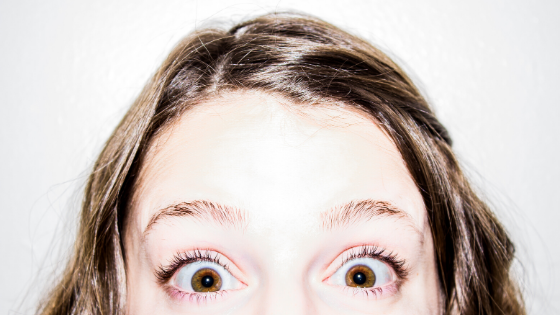When talking about art education, it’s important to distinguish between studio art and art history. Similarly, when talking about art consumption, it is important to distinguish between “high brow” and “low brow.” High brow art is considered to be the fine art in museums and galleries, as well as opera, ballet, and other forms that are associated with the upper class. Low brow is everything else.
Both these terms have been mired in many connotations. There are questions surrounding “otherness” and brow level. High brow tends to be art made by white, straight people for white, straight people. But the barriers between the two can be complex. For instance, Les Ballets Trockadero de Monte Carlo is a troupe of men trained in ballet who dress and perform as ballerinas in classic ballets like Swan Lake. There is a comedic element in their performance, and it is, in many ways, a drag show. Is that high brow (ballet) or low brow (comedy and drag)?
Alvin Ailey founded his theater in 1958 as a form of activism to create a space for dancers of color and traditional music; his legacy lives on in dance companies today that sell out gilded theaters and opera houses. High brow for the art form or low brow for the the celebration of traditional music?
If you thought very clearly that these examples are high brow or low brow, why is that? What perceptions do you have about these questions?
Brow level also changes over time. Shakespeare wrote plays that contained ribald humor and resonated with common people in England at the time. Now Shakespearian actors sport the highest of brows.
At its most extreme, high brow art can seem very oppressive and promoting of white supremacy, while low brow can be associated with book burning and icon smashing. Walter Murdoch wrote in 1937 about a great fear of people proud to be low brow because he was watching fanatics destroy art in Germany1.
For the purposes of this post, I’m going to define high brow as art made for art’s sake and low brow as art made for the market.
Difference Between High Brow and Low Brow
Using those definitions when looking at the creation of art, an interesting trend appears. In high wage cities, artists are free to create art they want to make and an avant garde emerges. In low wage cities, artists must depend on the market to make a wage. This is very intuitive, but it deserves exploration because the impression that high brow forms are for rich people is borne out in the fact that high brow art is made in wealthy areas. So, down with high brow?
Today, we appear to live in a very low brow world. It is so easy to consume entertainment; one can stream shows and movies on one’s phone. There’s an overwhelming number of genres in music, television, and film. The genre recommendations on Netflix are parody worthy because they’re so specific (LGBTQ Psychological Movies and African-American Crime Documentaries). Music is much the same. It’s possible to only listen to the very specific kind of music one wants in the moment. At the same time, people complain about that all the movies coming out are sequels, superhero movies, or remakes. Oscar nominations and winners are seen as predictable. We have so many choices, but choose the same things over and over again. Typically, the antidote to situations like this is an avant-garde.
Combining Brow Levels
Paul Lopes writes about the autonomy of American artists in the mid 20th century and how that created both a permanent avant-garde and a class of permanent independent popular artists. According to Lopes, that creation, in turn, has led to the wealthy consuming popular low brow art more than they ever have before2. We’re seeing a rise in popular culture that has an element of high art in it; movies like Mad Max Fury Road are box office successes and also receive critical acclaim, making them a mix of popular and high art. Whether that’s caused by the fact the wealthy are now consuming low brow art on a large scale is up for debate.
This combination of high brow and low brow has become the norm. It therefore behooves educators to make sure that students can read the symbols present in the entertainment they’re consuming. Don Krug has researched how classical symbols from high brow art have remained present in low brow art and what the effect of that might be.
For example, the Madonna and Child is a ubiquitous symbol, even today. Krug shows examples such as the overtly related Vanity Fair story from 1998 called “Madonna and Child,” featuring the singer Madonna seated with her daughter Lourdes on her lap, an image that very clearly evokes paintings of the seated Virgin Mary with the baby Jesus on her lap3. But there are Madonna and Child references that are less obvious. In 1989, The United Colors of Benetton produced an ad showing a black woman nursing a white child in a series of provocative ads focused on race relations.



Another example is the iconic image from the Great Depression of 32 year old Florence Owens Thompson seated surrounded by her children taken by Dorothea Lange called Migrant Mother . The motif of Madonna and Child is present in all of these. Symbols have power because the people reading them understand their meanings. The images previously mentioned evoke an emotional response, but by tying them to their symbolic precedent, they gain power in symbol.

It is important for students to be able to read these symbols as high brow and low brow art continue to draw from each other and intermingle. It is up to educators to make sure that they can.
- Walter Murdoch, “The Tyranny of the Low-Brow,” The Australian Quarterly 9, no. 1 (1937): 40, https://doi.org/10.2307/20629405.
- Paul Lopes, “The Heroic Age of American Avant-Garde Art,” Theory and Society 44, no. 3 (May 2015): 219–49, https://doi.org/10.1007/s11186-015-9244-9.
- Don Krug, “Symbolic Culture and Art Education,” ART EDUCATION, 2003, 8.

